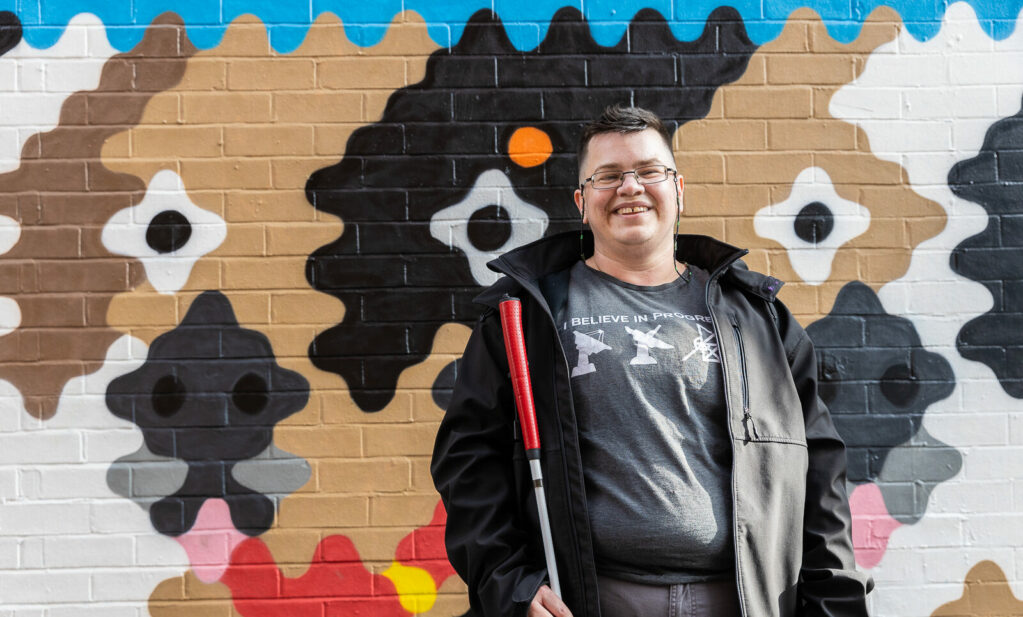Disabled activists occupy a bus stop for accessible transport
Transport for All
Yesterday, over 100 disabled activists convened outside...
Yesterday, over 100 disabled activists convened outside Parliament, calling for accessibility indicators to be at the heart of the procurement process.
The Right to Ride, organised together with DPAC, brought together disabled activists from as far as Birmingham to ride the buses together and demand that when transport services are put out to tender, bus and train companies which consistently fail disabled passengers are penalised.
In Parliament, MPs Lisa Nandy, Maria Eagle, Jeremy Corbyn and John McDonnell addressed DPAC and TfA members.
“Disabled people being denied access to transport is not just an issue for disabled people“, said Lisa Nandy, to applause. “It’s an issue for all of us who want to live in a civilised society“.
Disabled people also spoke of their daily battles to get to work, friends and appointments; and of fears that proposed cuts to Disability Living Allowance would further restrict people’s mobility and leave them isolated.
After the meeting, we were joined by more activists at Abingdon Street Bus stop. Protesters wielded placards reading ‘How can I get to work if I can’t get on a bus?’ and ‘ACCESSIBLE TRANSPORT. NO EXCUSES’ We chanted “No ifs! No buts! No access cuts!“. Several people spoke through the megaphone about their transport experiences, and people who had been involved in the historic Right to Ride actions of the 90s were present.
We were joined by Julian Huppert MP who spoke passionately about the need for disabled people to travel with the same freedom and independence as everyone else. Navin Shah, a London Assembly Member, also spoke and promised to raise the issue of inaccessible transport at Mayor’s Question Time.
Demonstrators had planned to travel to the Confederation of Passenger Transport (CPT), which represents the bus industry, to present a letter of demands. It was clear that the bus stop was inaccessible: the high Cassel kerb meant that all passengers were faced with a large jump between kerb and bus; and the wheelchair ramp would not be able to operate.

When the 87 bus arrived, wheelchair users were denied access. The bus driver told us that the wheelchair space was occupied by a pushchair: in clear contravention of TfL guidelines that wheelchair users take priority in the bay; and bus drivers must request that the buggy user fold their pushchair.
The fact that the bus had a wheelchair ramp was irrelevent: the bus ramp could not work here, or at the hundreds of other London bus stops which are too high or low for a ramp; or blocked by street furniture.
In addition, the small size of the wheelchair bay meant that there was no possibility of the pushchair user and wheelchair user sharing the bay – conflict was inevitable.
Bus occupation
Anger in the crowd was high. Adam threw his wheelchair into the bus and crawled on. Akira managed to jump on his wheelchair onto the bus. And three wheelchair users sat down in front of the bus and refused to move.

When another bus pulled up behind, three activists managed to board and headed off to CPT. Another group walked and wheeled to a nearby accessible bus stop where, happily, the bus ramp worked, and made the short journey to CPT’s offices in Covent Garden.
We were met by two CPT members of staff and presented our letter. CPT agreed to meet with a delegation of disabled passengers to talk more deeply about the need for bus companies to take accessibility seriously.
You can see more pictures from the day here: http://www.flickr.com/photos/62704958@N05/sets/72157630208155358/with/7408075292/


